Putuo Zongcheng Temple: A Journey Through Tibetan Buddhism in China
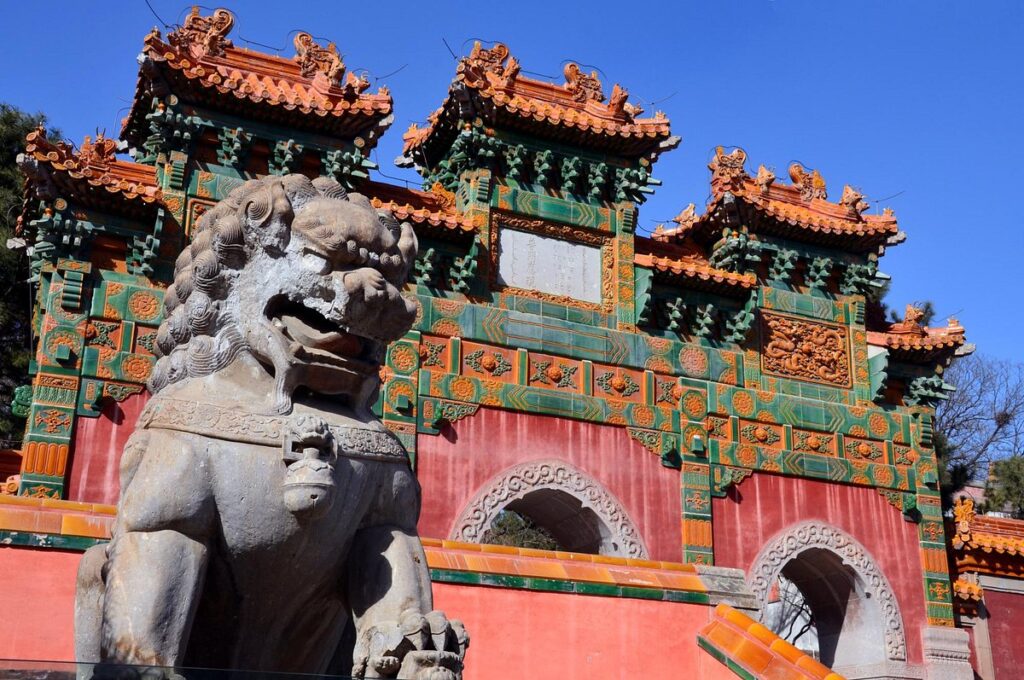
An Essential Guide to Visiting Putuo Zongcheng Temple
In This Guide
- An Essential Guide to Visiting Putuo Zongcheng Temple
- The Rich History and Legends of Putuo Zongcheng Temple
- Main Highlights: What You Absolutely Can’t Miss
- Planning Your Visit: A Practical Guide
- Tickets: Prices, Booking, and Tips
- How to Get There: A Complete Transportation Guide
- Local Cuisine and Accommodation Nearby
- Frequently Asked Questions
- Final Thoughts on Your Trip
Nestled in the serene landscape of Chengde, Hebei Province, the Putuo Zongcheng Temple—often referred to as the “Small Potala Palace”—stands as a remarkable testament to the grandeur of Buddhist architecture and imperial ambition. Constructed during the Qing Dynasty in the late 18th century, this temple complex was designed to echo the majestic Potala Palace in Lhasa, Tibet. However, what sets it apart is not just its architectural inspiration but the stunning natural backdrop it occupies, perched on a hill that offers panoramic views of the surrounding mountainous terrain.
As you approach Putuo Zongcheng Temple, the sight of its elegant eaves and intricate decorations evokes a sense of reverence and awe. The temple is not merely a place of worship; it’s a historical narrative woven through its walls, showcasing the cultural syncretism of Tibetan Buddhism and Han Chinese artistry. Visitors can immerse themselves in the ethereal atmosphere as they navigate the many steps leading to the main courtyard, where the tranquility of the space invites reflection and appreciation of its spiritual significance.
What to Expect
-
Architectural Marvel: The temple complex spans over 2.4 million square feet, making it one of the largest of its kind. As you wander through its halls, the blend of Tibetan and Han architectural styles will captivate your imagination.
-
Breathtaking Views: The ascent to the temple is rewarding; not only do you engage physically with the steps, but you are also treated to breathtaking views of the lush landscape below. The journey upwards is as enriching as the destination itself.
-
Cultural Insight: Engaging with the temple offers a unique glimpse into the religious practices that have shaped the region’s history. The site was once a favored retreat for emperors, where they held grand ceremonies and spiritual gatherings.
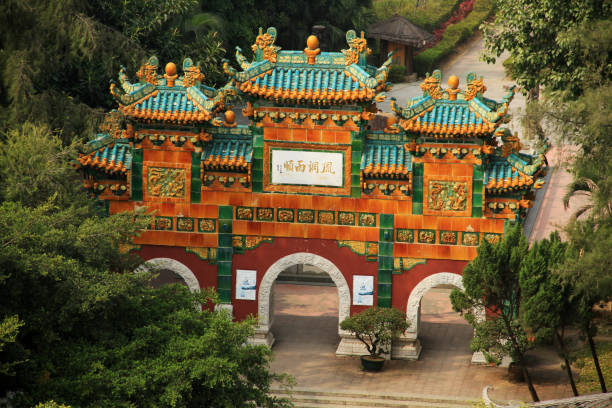
Putuo Zongcheng Temple.
Practical Tips
-
Visiting Hours: The temple is open daily from 9:00 AM to 4:30 PM. Plan your visit accordingly to allow ample time for exploration.
-
Preparation for Climbing: Wear comfortable shoes, as the numerous steps may require a bit of stamina, but don’t be discouraged—the effort is well worth the unparalleled beauty you will encounter.
-
Photography: Capture the stunning vistas and intricate temple details, but be courteous of worshippers and maintain a respectful distance.
In conclusion, a visit to Putuo Zongcheng Temple is more than just a sightseeing endeavor; it is an opportunity to connect with China’s rich tapestry of history and spirituality. Whether you are an avid traveler, a history enthusiast, or simply seeking a peaceful retreat, this temple promises an unforgettable experience steeped in cultural significance.
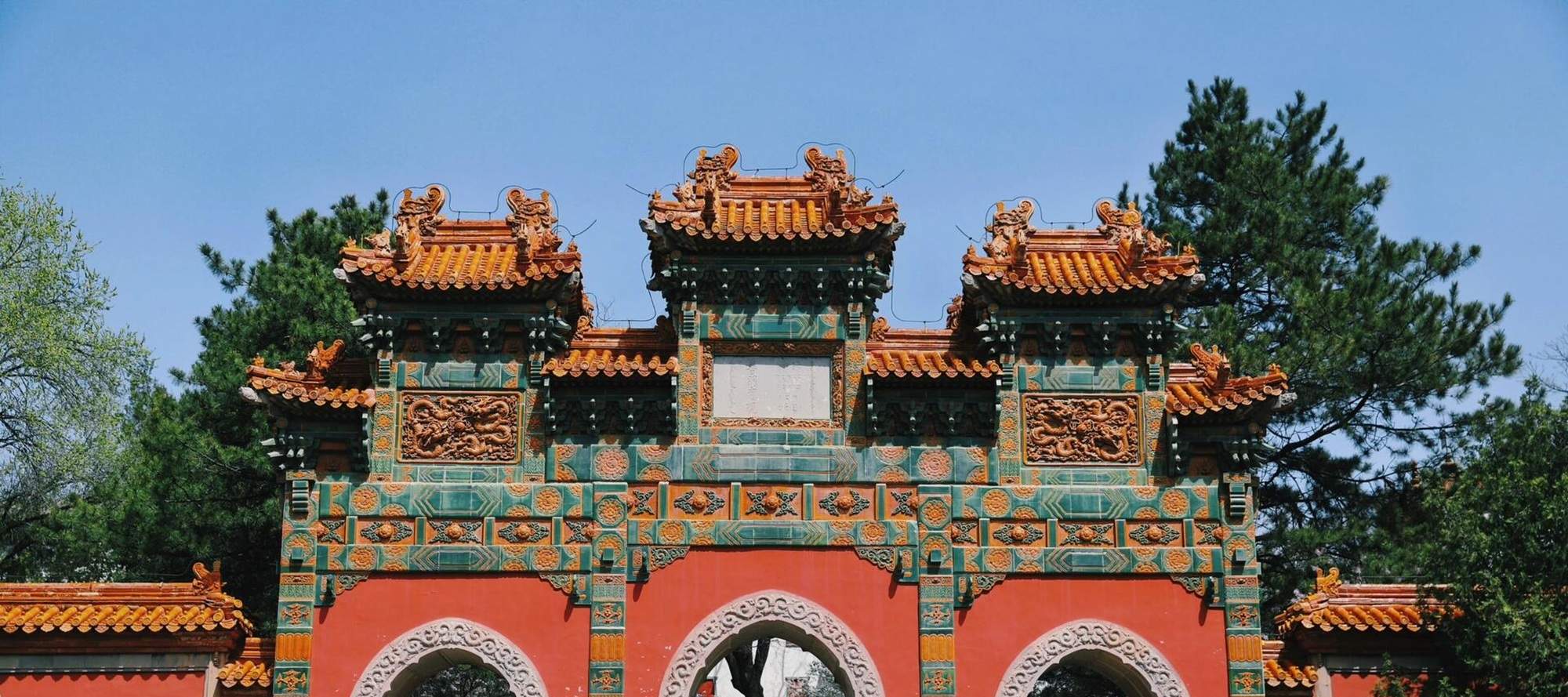
Putuo Zongcheng Temple.
The Rich History and Legends of Putuo Zongcheng Temple
A Journey Through Time: The History and Legends of Putuo Zongcheng Temple
Nestled in the verdant hills of Chengde, Hebei Province, the Putuo Zongcheng Temple (普陀宗乘之庙), often referred to as the “Small Potala Palace,” stands as a stunning testament to the confluence of Chinese and Tibetan Buddhist architecture. Commissioned by the Qianlong Emperor in the 18th century, this grand temple complex is not just a place of worship but a symbol of the Qing Dynasty’s cultural aspirations and a reflection of its emperors’ deep reverence for Buddhism.
Historical Background
Construction of the temple began in 1771 and was completed in 1780. The Qianlong Emperor, inspired by the majestic Potala Palace in Lhasa, sought to create an architectural marvel that would echo the spiritual essence of Tibetan Buddhism while incorporating Han Chinese elements. This ambitious project was part of a broader initiative by the emperor to establish Chengde as a summer retreat for the imperial family and a center for religious and cultural activities.
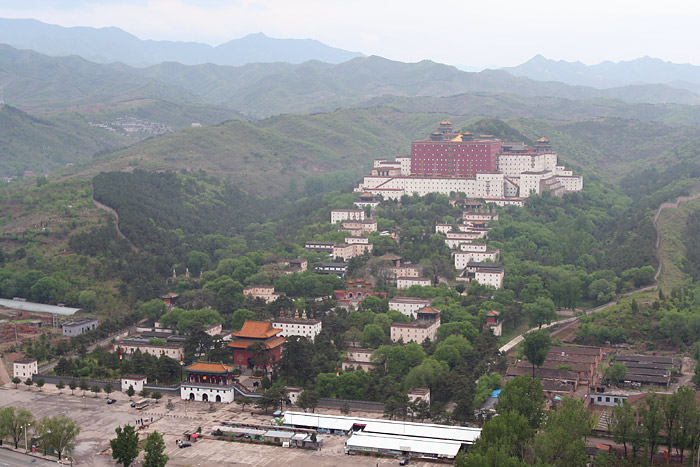
Putuo Zongcheng Temple.
The temple complex spans over 2.4 million square feet, making it one of the largest of its kind in China. Its striking layout features a series of majestic halls, pavilions, and courtyards, all designed to emulate the sacred geography of Tibet. Visitors must ascend steep stone steps to reach the main courtyard, where a three-story statue of the Buddha awaits, embodying the very essence of peace and enlightenment.
Architectural Marvel
Putuo Zongcheng Temple is renowned for its architectural splendor, which captures the spirit of both Han and Tibetan traditions. The harmonious blend of styles is evident in its colorful frescoes, intricate carvings, and ornate decorations. The temple’s design is not only aesthetically pleasing but also imbued with symbolic significance, reflecting Buddhist cosmology and the quest for spiritual transcendence.

Putuo Zongcheng Temple.
The temple complex is structured around a main axis, with each building meticulously aligned to enhance its spiritual significance. The grand hall of the Buddha, adorned with statues and murals, serves as a focal point for worship and meditation. The layout, rich in change and variation, allows visitors to experience a sense of journey, mirroring the spiritual path that Buddhism advocates.
Legends and Cultural Significance
The Putuo Zongcheng Temple is steeped in legends that enhance its mystique and cultural importance. One such legend speaks of the Qianlong Emperor’s vision during a pilgrimage to Tibet. It is said that he dreamt of a divine connection with the Buddha, prompting him to create this temple as a means of bridging the spiritual and the earthly realms. This narrative not only reflects the emperor’s personal devotion but also the broader religious syncretism of the time.
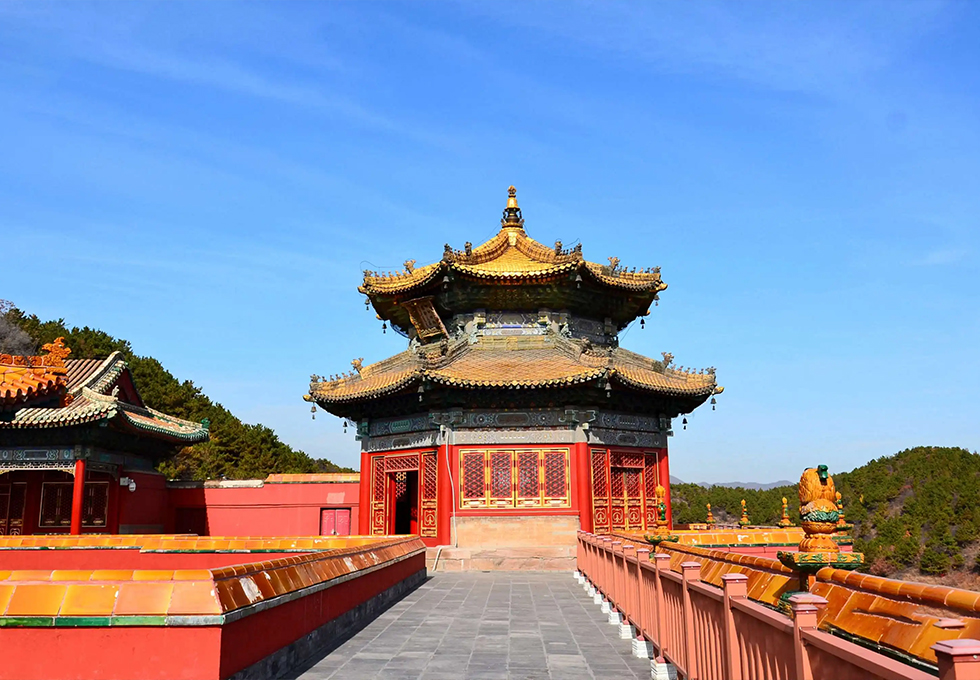
Putuo Zongcheng Temple.
Another captivating tale involves the temple’s sacred relics, believed to possess miraculous powers. Pilgrims and visitors often recount stories of healing and blessings attributed to their prayers at the temple. The act of tying prayer flags at the temple’s summit is a cherished tradition, symbolizing the connection between the devout and the divine.
The Legacy of the Qing Dynasty
Putuo Zongcheng Temple stands as a remarkable legacy of the Qing Dynasty’s cultural and religious landscape. It is a reminder of an era when emperors embraced the spiritual practices of their subjects, fostering a unique blend of religious tolerance and artistic expression. The temple is not only a site for historical reflection but also a vibrant center for contemporary Buddhist practice.
Today, it remains a popular destination for both local and international travelers. As visitors ascend the many steps to the temple’s heights, they are not just embarking on a physical journey but also a spiritual pilgrimage through history, culture, and faith. The breathtaking views from the top serve as a fitting reward, offering a glimpse of the natural beauty that surrounds this sacred site.
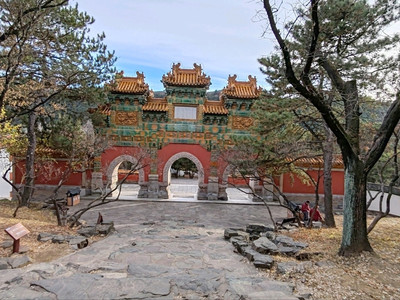
Putuo Zongcheng Temple.
Conclusion
In essence, the Putuo Zongcheng Temple is more than an architectural wonder; it is a living testament to the rich tapestry of Chinese history and culture. It invites travelers to immerse themselves in its stories, explore its beauty, and reflect on its enduring significance. Whether you are a history buff, a spiritual seeker, or simply an admirer of stunning architecture, a visit to this enchanting temple promises to be an unforgettable experience that resonates long after the journey has ended.
Main Highlights: What You Absolutely Can’t Miss
Discovering the Wonders of Putuo Zongcheng Temple
Nestled in the serene landscape of Chengde, Putuo Zongcheng Temple, also known as the “Small Potala Palace,” stands as a mesmerizing tribute to Tibetan Buddhist architecture. This temple, completed in the late 18th century during the reign of Emperor Qianlong, is a must-visit for any traveler eager to explore China’s rich cultural tapestry. Here are the main highlights you absolutely can’t miss.
1. Stunning Mountain Views
As you approach the temple, prepare to be captivated by breathtaking vistas. The temple is strategically perched on a hillside, providing panoramic views of the surrounding mountains and forests. For the best perspective, take a moment at the lookout point along the bus route to capture the temple’s grandeur from above.
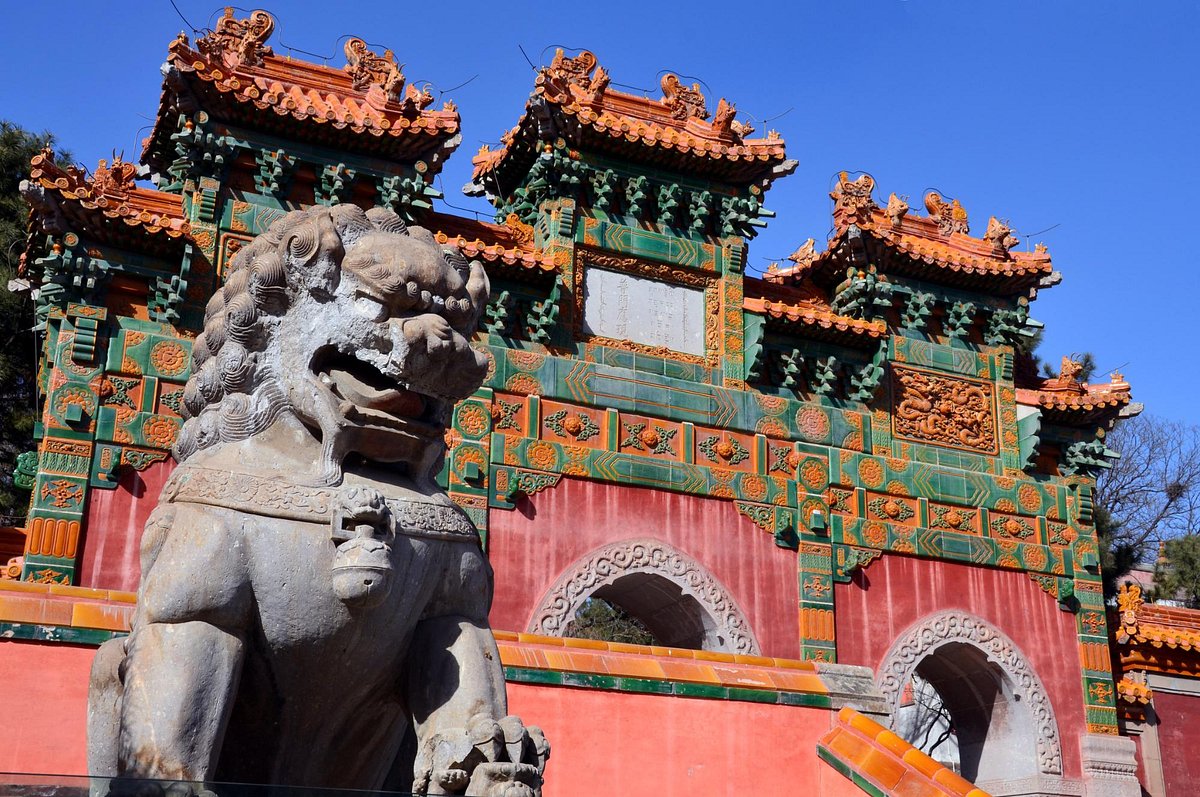
Putuo Zongcheng Temple.
2. Architectural Marvel
The design of Putuo Zongcheng Temple is a harmonious blend of Han Chinese and Tibetan styles. Modeled after the famous Potala Palace in Lhasa, Tibet, it features grand staircases, intricate carvings, and majestic halls. As you explore the temple grounds, notice the elaborate decorations and the careful craftsmanship that reflect the skills of artisans from centuries past.
3. The Grand Courtyard
Reaching the main courtyard requires a climb up numerous steps, but the effort is well worth it. The courtyard serves as the heart of the temple, surrounded by impressive structures and adorned with statues of deities. Take your time here to absorb the spiritual atmosphere and admire the architectural details.
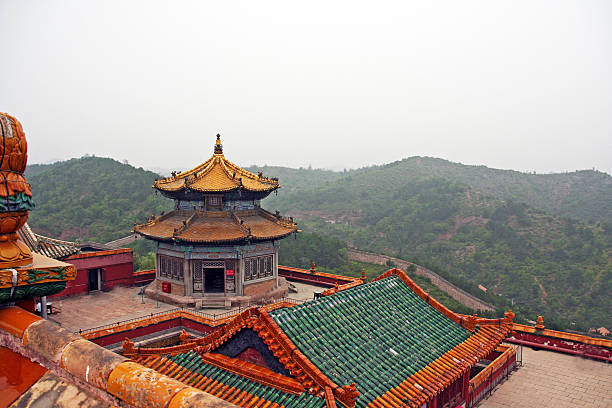
Putuo Zongcheng Temple.
4. Buddha Statues and Relics
Inside the temple, you will find a three-story statue of Buddha, which is a focal point for visitors. The statue, along with other sacred relics, is a testament to the temple’s spiritual significance. Observing the intricate details of these figures provides insight into Buddhist artistry and devotion.
5. Cultural Activities
Putuo Zongcheng Temple is not just a site for sightseeing; it also hosts various cultural events and rituals. If you’re lucky, you may witness monks engaged in traditional ceremonies or teachings. These moments offer a unique glimpse into the living practices of Buddhism and the significance of this temple in the faith.
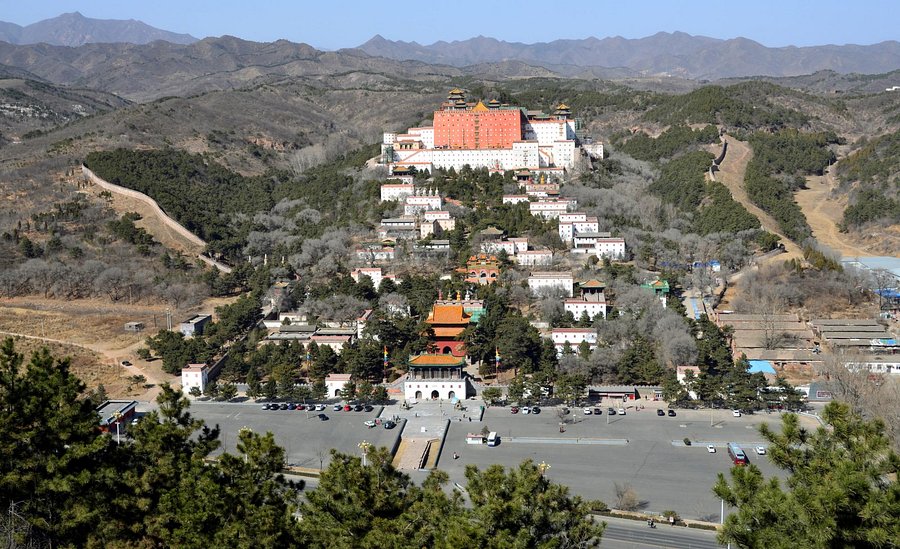
Putuo Zongcheng Temple.
6. Souvenir Opportunities
At the temple’s peak, there are opportunities to purchase meaningful souvenirs, such as prayer flags. These flags, when hung, are believed to carry blessings on the wind, making them a beautiful memento of your visit.
7. Accessibility and Visitor Experience
While the trek to the temple’s summit involves a fair number of stairs, the journey is accessible for most visitors, and the views along the way are rewarding. The temple is open year-round, so plan your visit to enjoy a peaceful atmosphere, especially during weekdays when crowds are thinner.
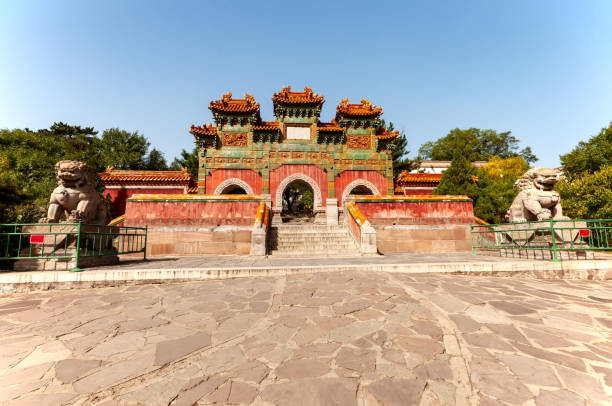
Putuo Zongcheng Temple.
8. Nearby Attractions
Don’t miss the chance to explore the Imperial Summer Palace of Mountain Resort and other nearby temples, such as the Temple of Universal Peace and the Eight Outer Temples. These sites complement your visit to Putuo Zongcheng Temple, enriching your understanding of the region’s history and culture.
Conclusion
Putuo Zongcheng Temple is more than just a historical site; it is a gateway to understanding the intricate relationship between Chinese culture and Buddhism. As you traverse its hallowed grounds, take a moment to reflect on the legacy of the emperors and the spiritual journeys that continue to unfold here. Whether you are a history enthusiast, a culture seeker, or a spiritual explorer, this temple promises an unforgettable experience.
Planning Your Visit: A Practical Guide
Your Comprehensive Guide to Visiting Putuo Zongcheng Temple
Nestled in the scenic mountains of Chengde, the Putuo Zongcheng Temple (普陀宗乘之庙), often referred to as the “Small Potala Palace,” is a spectacular blend of Tibetan and Han architectural styles. This majestic Buddhist temple is not only a significant cultural site but also a testament to the Qing Dynasty’s grandeur. Whether you’re a history enthusiast or a curious traveler, planning your visit to this remarkable site can enhance your experience. Here’s everything you need to know.

Putuo Zongcheng Temple.
Getting There
Location:
Putuo Zongcheng Temple is located just north of the Lion Ditch in Chengde, Hebei Province, China. The temple is easily accessible by public transport, taxi, or private tour from Beijing, which is approximately 230 kilometers (143 miles) away.
Transportation Options:
– By Train: The fastest way to reach Chengde is via a bullet train from Beijing. The journey takes around 2 to 3 hours. Once in Chengde, local buses or taxis can take you to the temple.
– By Car: If you prefer a road trip, renting a car or hiring a private driver can offer flexibility to explore the surrounding areas.
Best Time to Visit
The temple is open year-round, but the best time to visit is during spring (April to June) and autumn (September to October) when the weather is mild and the natural scenery is at its most beautiful. Be sure to check the local weather forecast before your trip.
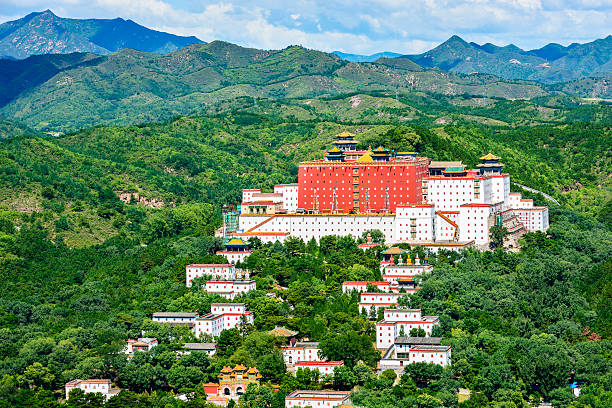
Putuo Zongcheng Temple.
Opening Hours
- Daily: 9:00 AM – 4:30 PM
Tip: Arrive early in the day to avoid crowds and experience the tranquility of the temple grounds.
Admission Fees
There is an entrance fee to visit Putuo Zongcheng Temple. While prices can vary, it’s advisable to check for any updates or special discounts, especially for students or seniors.
What to Expect
- Architectural Marvel: Prepare for a breathtaking view of the temple, perched majestically on the mountainside. The layout mimics the Potala Palace in Lhasa, making it a unique sight.
- Stair Climbing: Expect to climb several flights of stairs to reach the main courtyard. While it may seem daunting, the steps are manageable, and the panoramic views from the top are worth the effort.
- Cultural Insights: Take time to explore the intricate designs and artwork throughout the temple, reflecting both Tibetan and Han influences. You might also encounter monks engaged in daily rituals, adding to the cultural richness of your visit.
Nearby Attractions
After visiting the temple, consider exploring the following nearby sites:
- Imperial Summer Palace of Mountain Resort: Just a short distance away, this expansive site features beautiful gardens and historic architecture.
- Temple of Universal Peace (Puning Si): Another significant temple in Chengde, known for its impressive statues and serene atmosphere.
- Museum of Summer Resort: Offers insights into the history and culture of the region.
Dining Options
While visiting, you’ll want to refuel. Here are some recommended dining spots nearby:
- U.B.C. Coffee: A cozy café perfect for a quick break.
- Giraffe Cafe: Offers a variety of meals, ideal for families.
- Mu Hei Restaurant: A local favorite for quick and delicious fast food.
Tips for a Memorable Visit
- Wear Comfortable Shoes: The terrain involves climbing stairs and walking on uneven surfaces.
- Stay Hydrated: Carry water with you, especially during warmer months.
- Respect Local Customs: As a religious site, maintain a respectful demeanor and follow any posted guidelines.
- Capture the Moment: Don’t forget your camera! The temple’s stunning architecture and the surrounding landscape provide countless photo opportunities.
Conclusion
Visiting Putuo Zongcheng Temple is more than just a sightseeing trip; it’s an immersion into the rich tapestry of Chinese culture and history. With this guide in hand, you’re well-equipped to make the most of your journey to this extraordinary landmark. Enjoy your visit!
Tickets: Prices, Booking, and Tips
Visiting Putuo Zongcheng Temple: Ticket Information, Booking, and Tips
Putuo Zongcheng Temple, often referred to as the “Small Potala Palace,” is a breathtaking Buddhist temple located in the scenic Chengde area of China. Known for its stunning architecture and rich history, it offers visitors an unforgettable glimpse into Chinese culture and spirituality. Here’s everything you need to know about tickets, booking, and tips to enhance your visit.
Ticket Prices
- General Admission: Approximately ¥30 (CNY) per person.
- Discounted Tickets: Students and seniors may be eligible for discounted rates, typically around ¥15 (CNY). Be sure to bring valid identification.
- Free Admission Days: Occasionally, the temple may have special events or free admission days. Check the official website or local travel resources for updates.
Opening Hours
- Daily: 9:00 AM – 4:30 PM
- Best Visiting Times: Early morning or late afternoon is ideal to avoid crowds and enjoy the serene atmosphere.
Booking Information
While tickets can be purchased on-site, it’s advisable to book your tickets in advance, especially during peak tourist seasons (spring and fall). Here are a few ways to secure your tickets:
- Online Booking: Many travel platforms allow for advance ticket purchases. Websites like Trip.com or Klook offer easy booking options.
- Local Tours: Consider joining a guided tour that includes entrance fees. This not only saves time but also enhances your experience with knowledgeable guides.
- On-site Purchase: If you prefer spontaneity, you can buy tickets at the entrance, but be prepared for potential wait times during busy periods.
Tips for Your Visit
-
Wear Comfortable Shoes: The temple is perched on a hill and requires climbing many stairs. Comfortable footwear will make your ascent easier and more enjoyable.
-
Explore Early: Arriving early allows you to appreciate the tranquility of the temple before larger tour groups arrive.
-
Photography: The views from the temple are stunning. Don’t forget your camera, but be respectful of the sacred spaces and avoid flash photography.
-
Guided Tours: For deeper insights into the temple’s history and architecture, consider hiring a local guide. They can provide valuable context and stories that enhance your visit.
-
Stay Hydrated: Bring water to stay refreshed, especially if you plan to hike up the many steps.
-
Combine Visits: The Putuo Zongcheng Temple is part of a larger complex of historical sites in Chengde. Plan to visit the nearby Imperial Summer Palace and other temples to make the most of your trip.
-
Cultural Respect: As with any place of worship, maintain a respectful demeanor, dress modestly, and observe any local customs or restrictions.
Visiting Putuo Zongcheng Temple is not just a journey through architecture; it’s an exploration of a vital part of China’s spiritual heritage. With this guide, you’re well-prepared to enjoy all that this magnificent site has to offer. Enjoy your visit!
How to Get There: A Complete Transportation Guide
Getting to Putuo Zongcheng Temple: Your Comprehensive Transportation Guide
Visiting the majestic Putuo Zongcheng Temple, often referred to as the “Small Potala Palace,” is a journey steeped in cultural richness and architectural splendor. Nestled in the scenic city of Chengde, Hebei Province, this temple is a captivating destination that reflects both Tibetan and Han architectural styles. Here’s your guide on how to reach this remarkable site.
1. Arriving in Chengde
By Air:
– Nearest Airport: The nearest major airport to Chengde is Chengde Puning Airport (CED), which is approximately 30 kilometers from the city center.
– Connecting Flights: Domestic flights from Beijing (Capital International Airport) and other major cities are available. From the airport, you can take a taxi or a shuttle bus to Chengde’s downtown area.
By Train:
– High-Speed Trains: Chengde is well-connected via high-speed rail. The Chengde Railway Station serves as a major hub, with direct trains from Beijing (around 2 to 3 hours) and Tianjin.
– Regular Trains: For a more economical option, there are also slower trains available, though they may take longer.
By Bus:
– Intercity Buses: Several bus companies operate between Chengde and major cities, including Beijing. Buses typically depart from the Xijiao Bus Station in Beijing, and the journey takes around 3 to 4 hours.
2. Getting to Putuo Zongcheng Temple
Once you arrive in Chengde, reaching the Putuo Zongcheng Temple is straightforward:
Public Transportation:
– Local Buses: Take bus routes 1 or 3 from Chengde Railway Station to the temple. The bus ride takes approximately 30 minutes.
– Minibuses: Shared minibuses are also available and offer a quick and cost-effective option to reach the temple.
Taxi Services:
– Convenient and Direct: Taxis are readily available in Chengde and can take you directly to the Putuo Zongcheng Temple. The fare from the city center usually ranges between 30-50 CNY (approximately $5-$8), depending on traffic.
Walking:
– For the Adventurous: If you are staying nearby, the temple is within walking distance from the Chengde Summer Resort, making it a pleasant stroll through the city.
3. Exploring the Temple
Once you arrive at the temple, be prepared for a bit of a climb. The main courtyard is situated at the top of a hill, requiring you to ascend a series of stairs. Here are some tips to enhance your visit:
- Wear Comfortable Shoes: The steps can be steep, so sturdy footwear is essential.
- Take Breaks: Don’t hesitate to pause and enjoy the panoramic views of Chengde and the surrounding mountains.
- Best Time to Visit: Aim to visit early in the morning or late afternoon to avoid crowds and enjoy the serene atmosphere.
4. Tips for a Smooth Journey
- Plan Ahead: Check train schedules and book your tickets in advance, especially during peak travel seasons.
- Local Currency: Ensure you have enough Chinese Yuan (CNY) for local transport and entrance fees, as not all places accept credit cards.
- Language Barrier: While many signs are in English, learning a few basic Mandarin phrases can enhance your experience and ease communication.
With this guide in hand, you are well-equipped to embark on your journey to the enchanting Putuo Zongcheng Temple. Its breathtaking architecture and profound cultural significance await you! Safe travels!
Local Cuisine and Accommodation Nearby
Exploring the magnificent Putuo Zongcheng Temple not only offers a glimpse into the rich tapestry of Chinese Buddhist architecture but also immerses travelers in the local culture through its culinary delights and accommodations. Whether you’re looking for a quick bite after a day of exploration or a cozy place to rest, Chengde has a variety of options to enhance your visit.
Local Cuisine
After a day of climbing the temple’s stairs and soaking in breathtaking views, you’ll want to refuel with some delicious local cuisine. Here are a few standout spots nearby:
-
Mu Hei Restaurant (木黑餐厅)
Located just 2.4 miles from the temple, this fast-food option offers a mix of traditional Chinese dishes and quick bites. With a focus on local flavors, Mu Hei is perfect for travelers who want to try something authentic without spending too much time. -
Giraffe Cafe (长颈鹿咖啡)
About 2.4 miles from the temple, this cafe is a favorite for its cozy atmosphere and diverse menu. From hearty breakfasts to light lunches, you can enjoy a range of options, including Western-style dishes and local snacks. Their coffee is also highly recommended for those needing a pick-me-up. -
U.B.C. Coffee (优比咖啡)
If you’re in the mood for a relaxed coffee break, U.B.C. Coffee, located 2.3 miles away, provides a perfect setting. Known for its great selection of beverages and pastries, it’s an excellent spot to unwind and reflect on your temple visit.
Accommodations Nearby
When it comes to resting your head after a day of exploration, Chengde offers several comfortable accommodations that are conveniently located. Here are a few options:
-
Chengde Summer Resort Hotel
This hotel is situated near the Summer Palace and is just a short distance from the Putuo Zongcheng Temple. Offering a blend of traditional Chinese architecture and modern amenities, it’s an ideal place for travelers seeking comfort and convenience. -
Chengde Huasheng Hotel
Located about 3 miles from the temple, this hotel is known for its friendly service and cozy atmosphere. It provides a range of room types and is perfect for families or groups looking for a budget-friendly option. -
Chengde International Hotel
For those seeking a more upscale experience, the Chengde International Hotel offers luxurious accommodations with stunning views of the surrounding mountains. Its location makes it easy to explore both the temple and other nearby attractions.
Conclusion
Dining and accommodation in Chengde reflect the region’s rich cultural heritage, providing travelers with an authentic experience that complements the stunning beauty of the Putuo Zongcheng Temple. Whether you prefer a quick meal or a sit-down dinner, and regardless of your budget for lodging, there’s something for everyone in this charming city. Don’t miss the opportunity to savor local flavors and find a welcoming place to rest as you immerse yourself in this historical journey.
Frequently Asked Questions
Frequently Asked Questions about Putuo Zongcheng Temple
1. What is the Putuo Zongcheng Temple?
Putuo Zongcheng Temple, often referred to as the “Small Potala Palace,” is a grand Buddhist temple located in Chengde, Hebei Province, China. Constructed in the late 18th century during the reign of Emperor Qianlong, it is a stunning replica of the Potala Palace in Lhasa, Tibet, showcasing a unique blend of Han Chinese and Tibetan architectural styles.
2. How do I get to Putuo Zongcheng Temple from Beijing?
Travelers can reach Putuo Zongcheng Temple by taking a bullet train from Beijing to Chengde. The journey takes approximately 2.5 to 3 hours. Upon arrival, local transportation options such as taxis or guided tours can easily take you to the temple.
3. What are the opening hours?
The temple is open daily from 9:00 AM to 4:30 PM. Visitors are advised to arrive early to fully appreciate the site and avoid peak crowds.
4. Is there an entrance fee?
Yes, there is an entrance fee to visit Putuo Zongcheng Temple. The fee typically includes access to the main buildings and surrounding areas. It’s advisable to check current prices before your visit as they may vary.
5. How physically demanding is the visit?
Visiting Putuo Zongcheng Temple requires climbing several flights of stairs to reach the main courtyard and the upper levels. While the climb can be steep, many visitors find the steps manageable. Comfortable footwear is recommended.
6. Are there any guided tours available?
Yes, various guided tours are available that include Putuo Zongcheng Temple as part of a broader itinerary in Chengde. Options range from day trips to longer excursions. Booking a private tour with an English-speaking guide can enhance your understanding of the temple’s historical and cultural significance.
7. What should I wear when visiting the temple?
Visitors are encouraged to dress respectfully when visiting Putuo Zongcheng Temple. Lightweight, comfortable clothing that allows for ease of movement is ideal, especially considering the stairs. Additionally, modest attire is appreciated in religious settings.
8. What else can I see nearby?
The temple is part of the Chengde Mountain Resort complex, which includes many other historical sites and temples, such as the Imperial Summer Palace and the Temple of Universal Peace (Puning si). Plan to spend a day exploring the area to fully appreciate its rich history and stunning landscapes.
Final Thoughts on Your Trip
As your journey through the breathtaking landscapes and rich history of Chengde comes to a close, the Putuo Zongcheng Temple stands as a testament to the grandeur of Chinese Buddhist architecture and the cultural fusion that has marked this region for centuries.
A Journey Worth Taking
Visiting this magnificent temple is not just about witnessing its architectural splendor; it’s about immersing yourself in the spirit of ancient traditions and the serene beauty that envelops it. Climbing the many steps to the main courtyard may seem daunting, but each step brings with it a deeper appreciation for the craftsmanship and devotion that went into its creation.
Reflect on the Experience
- Marvel at the Architecture: The temple’s design, reminiscent of the Potala Palace in Lhasa, is a striking representation of Tibetan influence blended with Chinese artistry.
- Breathe in the Serenity: The panoramic views from the temple provide a moment of reflection and a chance to connect with the tranquility that has inspired countless visitors.
- Engage with History: As you explore the temple’s halls, think about the historical figures, such as Emperor Qianlong, who once walked these paths, celebrating Buddhist teachings and cultural gatherings.
Final Thoughts
Your visit to the Putuo Zongcheng Temple is a journey through time, a chance to witness the enduring legacy of Buddhism in China. It serves as a reminder of the beauty of cultural exchange and the timeless nature of spirituality.
As you depart, carry with you not only the memories of stunning vistas and intricate artistry but also a sense of peace and connection to the spiritual heritage that resonates within these ancient walls. Let the experience inspire you to explore further, whether in the depths of China’s history or in the quiet moments of your own life. Safe travels, and may your adventures continue to enrich your understanding of the world.